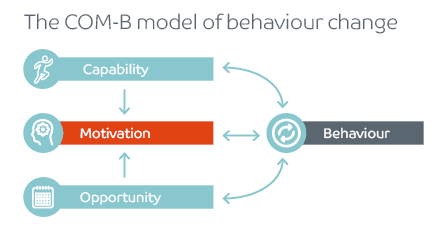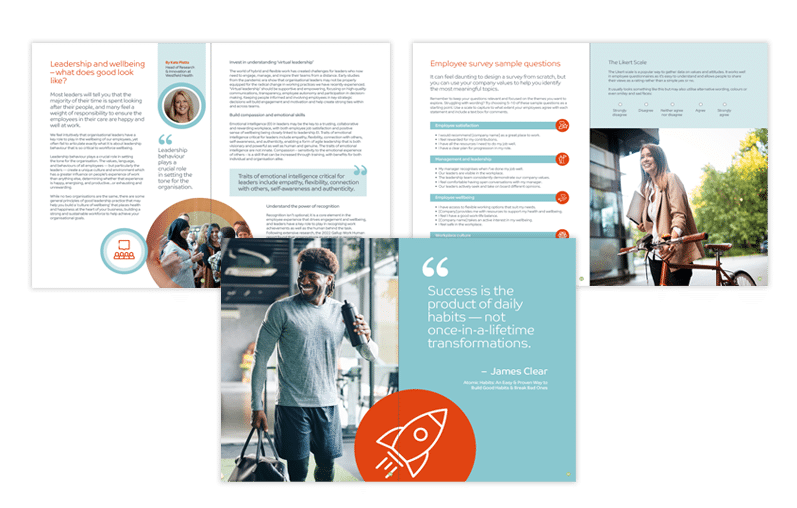When introducing a new wellbeing initiative to the workplace, it’s important to remember that change takes time. Each individual’s mindset, motivations and priorities will impact their readiness to adopt new habits and make changes to their routine.
Whether you’re introducing a lunchtime gym class, piloting a cycle-to-work scheme or providing mental health training, it’s helpful to understand what makes your people feel engaged and what might be preventing them from getting involved.
There are several different models that explain how and why we change our behaviours. In this blog we explore how businesses can use the COM-B model to encourage their people to get involved with new workplace initiatives and help them make more healthy choices.
The COM-B model explained
The COM-B model proposes three key drivers of behaviour: capability, opportunity and motivation.
- Capability
Individuals must feel that they are both psychologically and physically able to perform a behaviour.
How to help with this: Provide clear communication about what people can expect. Pitch activities at the right level. Offer multiple ways to engage with the new behaviour. - Motivation
Employees must want or need to carry out the behaviour more than other competing behaviours.
How to help with this: Use feedback to identify common issues and plan support in these areas. Work to create a culture where health is a priority. - Opportunity
Employees must have the social and physical opportunity for the behaviour.
How to help with this:Provide flexibility to fit wellbeing into the working day. Offer regular opportunities to get involved. Use social proof to encourage group behaviour change.
When the above conditions are met, people feel empowered to enact a particular behaviour. The behaviour itself creates a feedback cycle, which encourages or discourages similar behaviour in the future.
Once a behaviour change has taken place, encourage your people to share their feedback to ensure they’re having a positive experience (and improve it if they’re not).

Behaviour change example: hosting a stress awareness webinar
In this example, an organisation is hosting a webinar to help employees recognise and deal with stress. Attendance at webinars has been poor in the past, but the HR team have received many requests for this particular topic and want to maximise its impact.
Here are some ways they might help employees at each stage:
- Improving capability
A calendar invite is shared, with the webinar scheduled during core working hours to maximise availability. The HR team request for the session to be recorded and shared with employees who can’t attend the live event. - Increasing opportunity
Employees receive a series of messages about the upcoming webinar via email and posters are put up in the canteen. Managers discuss the topic with their direct reports in their 1:1s. The HR team shares a marketing pack explaining what attendees will learn and how it’ll help improve their wellbeing. - Increasing motivation
Employees are informed about the webinar a month in advance and managers are encouraged to arrange their team’s workload to allow time for them to attend. Teleconferencing equipment is set up for on-site workers who don’t have access to their laptops. - Enacting the behaviour
The webinar is delivered by a certified expert. Employees receive resources to take away to help them embed their new learning. More than half the workforce attends the live session and the HR team follow up with a feedback questionnaire. This helps them gather suggestions for future webinars and identify how people are putting their new skills into practice.
Different groups will face their own unique challenges when it comes to behaviour change, so it’s useful to consider how the COM-B model can be applied to both new and existing activities across the organisation.
For more information about structuring your activities, try our blog on whole-of-workforce wellbeing.
Find out more about wellbeing strategy
Our free Workplace Strategy Workbook includes over 30 pages of tips to build your wellbeing strategy and help your people create healthier habits.

From influencing company culture to engaging leaders and business partners, the workbook contains three chapters of guides, ideas and resources to help you create an effective wellbeing programme for your business.